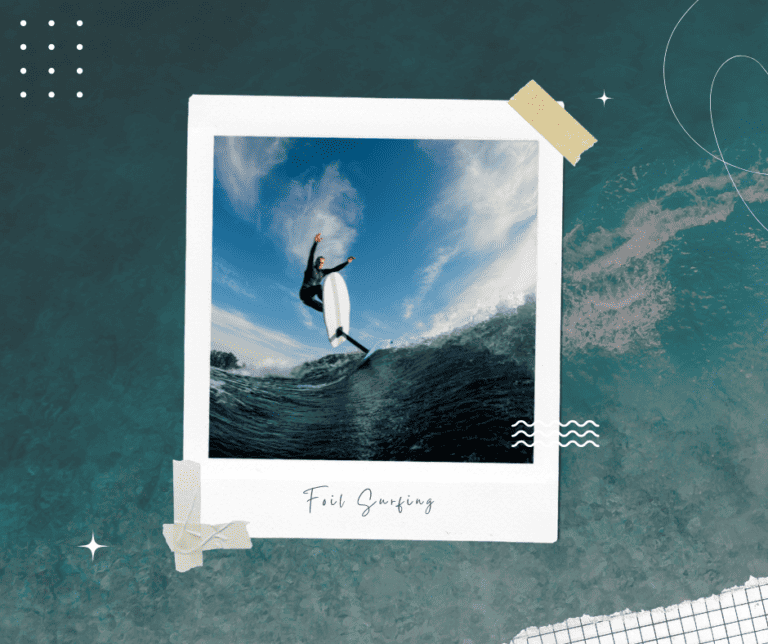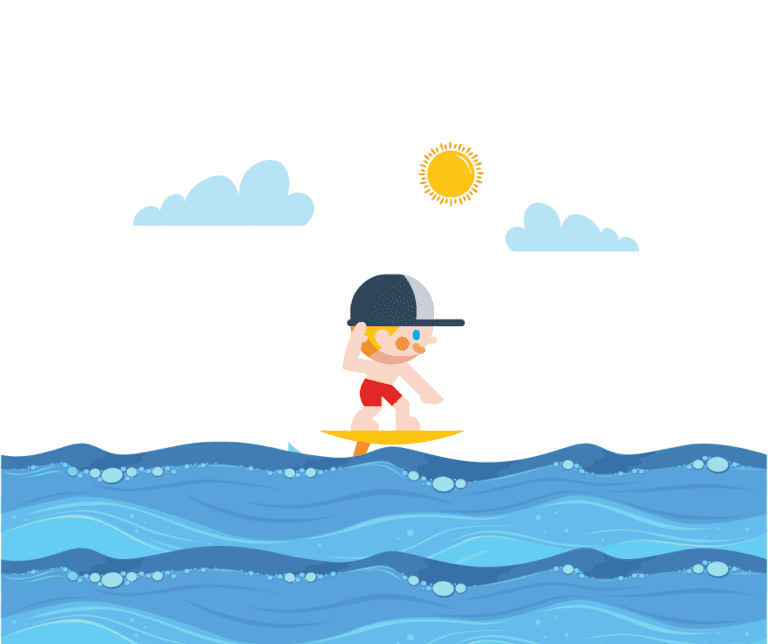Wing Foiling: A Beginner’s Guide to Learning the Sport
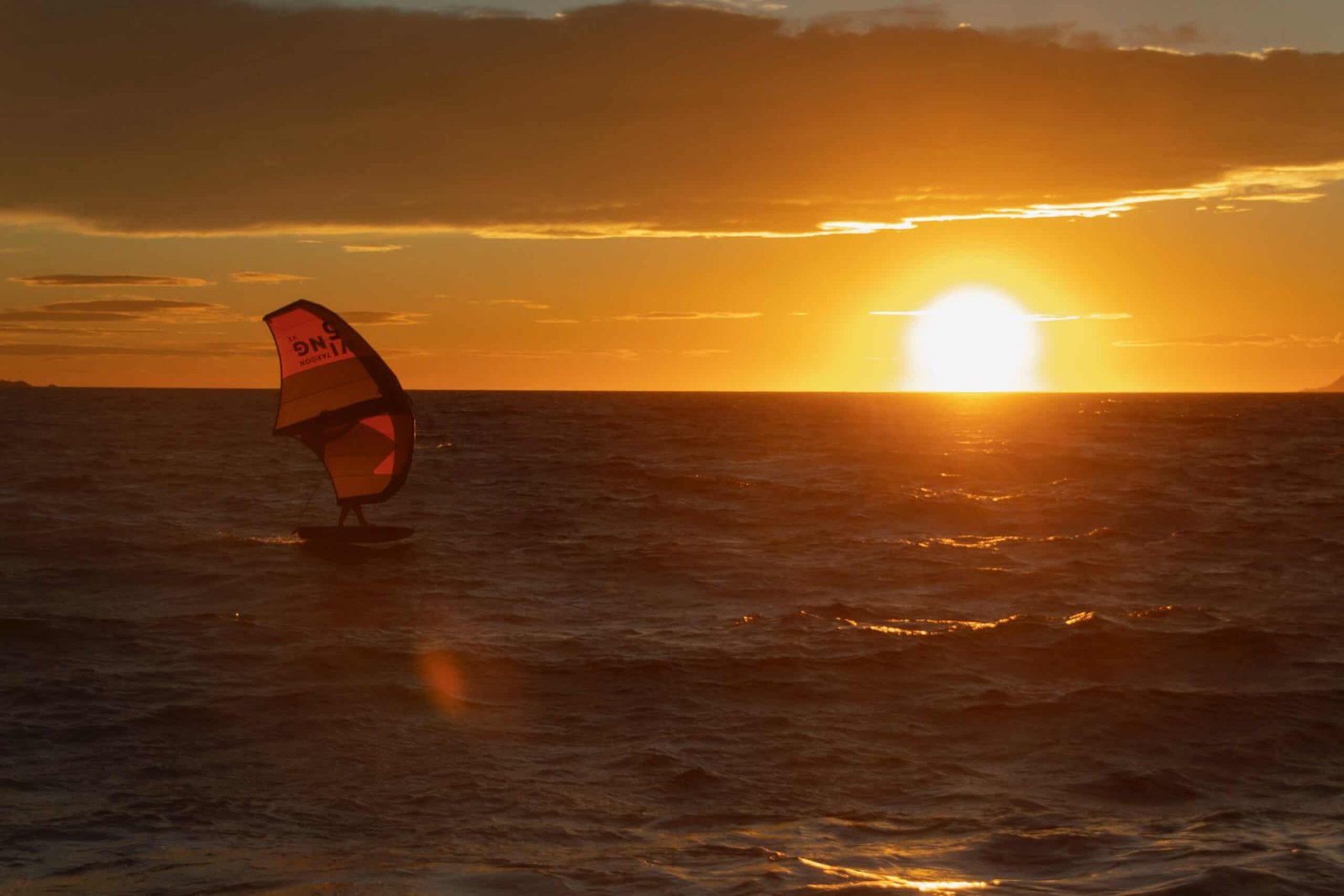
Wing foiling or wing surfing is taking the water sports world by storm, offering a unique blend of windsurfing, kitesurfing, and foiling in one exhilarating experience! If you’re ready to embark on one of the new thrilling outdoor activities and learn the art of wing foil, you’ve come to the right place.
Surf foiling is an innovative water sport that combines surfing with the use of a hydrofoil to glide above the water’s surface, offering a unique and exhilarating experience. This cutting-edge technique allows surfers to ride waves that are typically too small for conventional surfing, revolutionizing the way we interact with the ocean.
What is Wing Foiling?
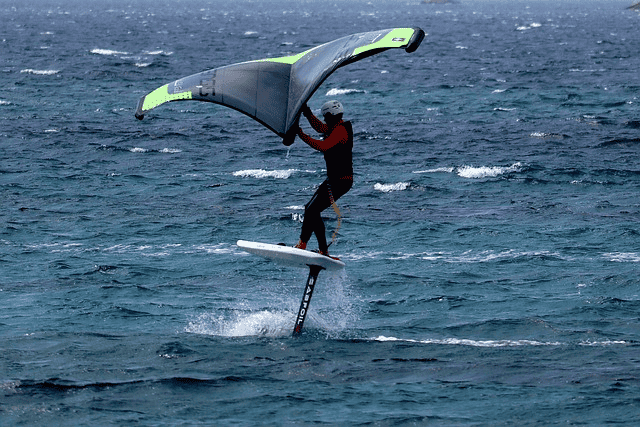
Wing foiling, sometimes referred to as wing surfers, wingfoiling, or windsurf foil wing foiling, is a new and rapidly growing water sport that combines elements of windsurfing, surfing, and foiling. It involves riding on a hydrofoil board while holding a handheld inflatable wing. The wing is used to catch the wind, providing propulsion, while the hydrofoil lifts the board out of the water, creating a unique sensation of gliding or “foiling” above the waves.
The equipment, often termed as “surf wings,” typically consists of a board with a hydrofoil attached and an inflatable wing. Unlike kiteboarding, the wing is not attached to the board or the rider, giving the rider more freedom and flexibility. The windsurf boards used in wing foiling, known as wing foiling boards, are generally shorter than traditional windsurfing boards and are designed specifically to work with hydrofoils.
Differences and Similarities Between Wing Foiling and Other Water Sports
While wing foiling is a distinct sport, it shares similarities with other water sports. Like windsurfing and kiteboarding, it leverages the power of the wind. However, unlike windsurfing, the wing is not attached to the board, and unlike kiteboarding, the wing is hand-held rather than flown in the air. This gives the sport a unique flavor, combining the aerial aspect of kiteboarding with the water contact and board-riding style more akin to surfing.
The main difference between wing foiling and these other sports lies in the use of a hydrofoil. The hydrofoil reduces water resistance, allowing for greater speed and agility. This “foiling” aspect has been integrated into various other sports like surf foiling and kite foiling, but in wing foiling, it’s combined with the unique features of a hand-held wing to create an entirely new experience.
In essence, wing foiling offers a blend of sensations from multiple aquatic sports, leading to a unique, exciting experience that is pushing the boundaries of water sports as we know them.
Mastering the Basics of Wing Foiling

Before you hit the water, it’s crucial to get a grasp on the fundamentals of wing foiling. This innovative sport combines elements of windsurfing, kitesurfing, and foiling, allowing riders who have mastered wing surfing to fly over the water while holding an inflatable wing that harnesses the wind’s power. As a result, wing surfing has become a popular and thrilling water sport for many enthusiasts.
As with any new sport, learning the basics will set you up for success and ensure a safer and more enjoyable experience.
Stance and Body Positioning
Your stance and body positioning plays a significant role in maintaining balance and control on the board. To achieve the correct stance, place your feet on the board with the front foot positioned slightly downwind and the rear foot slightly upwind. Keep your balance by standing straight with hips forwards and shoulders back.
Remember, weight distribution is crucial for staying balanced, so make sure to evenly distribute your weight between your feet.
Wing Handling Techniques
Handling the wing is a vital aspect of wing foiling. Your front hand is responsible for holding the wing. The backhand performs the important task of steering and controlling it. To prevent the wing from clipping the water, lift the front hand up and level the wing while shifting your hips backward slightly.
Mastering these techniques will provide you with greater control and maneuverability as you progress in the sport.
Turning and Maneuvering
As you gain confidence, you’ll want to explore different turning and maneuvering techniques. Some exciting maneuvers include the switch stance or switch to jibe, basic upwind and downwind turns, and the zigzag technique.
The switch stance or switch to jibe involves switching the direction of the board and rider weight on the wing in one smooth motion, while upwind and downwind turns involve turning the board and the wing in the same direction. The zigzag technique allows for tight turns and navigating around obstacles.
Practice these maneuvers to enhance your skills and make the most of your wing foil sessions.
Ideal Conditions for Learning Wing Foil

When starting your journey, it’s essential to understand the ideal conditions for learning. Factors such as wind strength, direction, and water depth play a significant role in your overall experience and safety.
By learning in optimal conditions, you’ll be able to build a solid foundation and progress more quickly.
Wind Strength and Direction
For beginners, the ideal wind range is between 15 and 20 knots, with cross-shore winds providing the best conditions. Onshore winds can make learning challenging as you’ll continually be blown back to the shore and into shallow water.
Offshore wind, while exciting, can also pose a challenge for beginners trying to return to the shore with full control of their craft. By practicing in lighter wind conditions, such as onshore light wind only, you’ll have a safer and more enjoyable learning experience.
Water Depth and Location
Water depth and location are crucial factors for learning wing foiling safely and effectively. Shallow water can be hazardous, while deeper water provides more lift and stability for the wing foil. The perfect water depth for mastering is one where you can stand, but the hydrofoil won’t hit the bottom.
When choosing a spot to practice, avoid floating objects and ensure the hydrofoil does not touch the bottom. By selecting a safe location with the appropriate water depth, you’ll be setting yourself up for a successful experience.
Selecting the Right Wing Foil Equipment
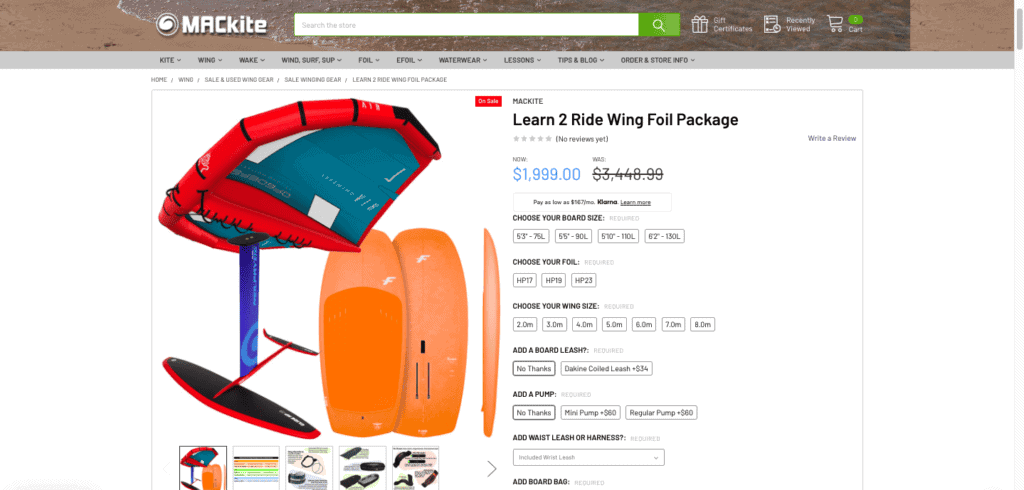
https://www.mackiteboarding.com/learn-2-ride-wing-foil-package/
To fully enjoy the thrill, it’s essential to choose the right equipment. A complete foil setup for wing foiling includes a mast, a fuselage, a front wing, and a stabilizer.
Selecting the appropriate foil board, wing, and hydrofoil will impact not only your learning curve but also your overall experience and safety.
Foil Board
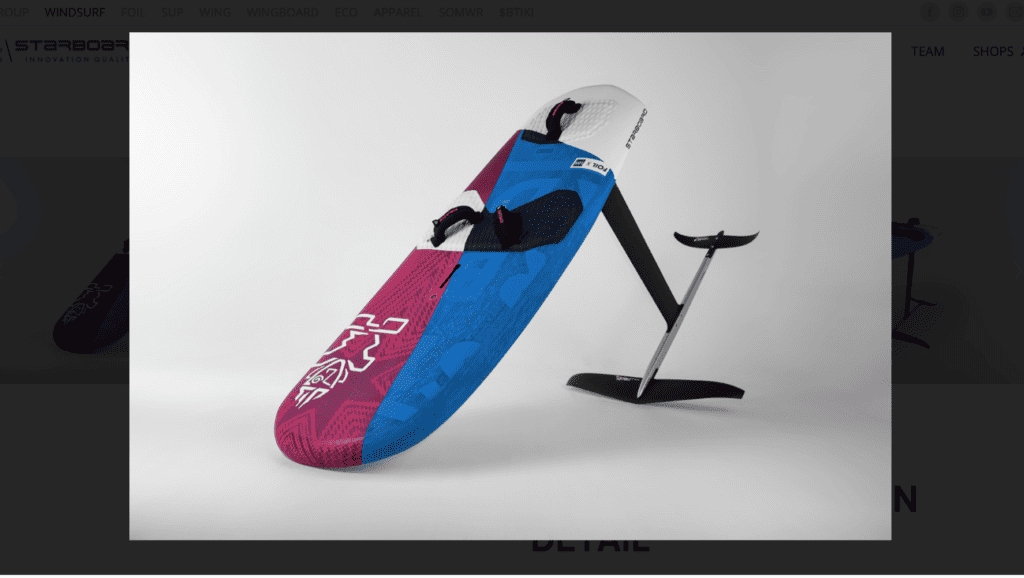
When choosing a foil board, consider factors such as size, volume, and stability, which will depend on your skill level and weight. For beginners, board sizes such as 5’8” and 6’3” are ideal, with a volume of around 30 or 40 liters more than your weight in kilograms.
A super stable SUP foil board (120L) is also a good option for beginners. By selecting the right SUP foil board or inflatable paddle board though, you’ll have a more enjoyable and manageable learning experience.
A wing foil board consists of several key parts, each contributing to the functionality and performance of the board. Here are the primary components:
Deck: The deck is the flat surface of the board where the rider stands. It’s usually covered with a non-slip pad for grip, ensuring the rider can maintain balance and control.
Rails: The rails are the edges of the board. They affect how the board interacts with the water, especially when turning or carving.
Nose and Tail: The nose is the front of the board, while the tail is the rear. The design of the nose and tail can affect the board’s performance, particularly with regard to how it planes on the water and how it maneuvers.
Foot Straps: Not all wing foil boards have foot straps, but many do, especially those designed for more advanced riders. Foot straps secure the rider’s feet to the board, providing better control and allowing for more aggressive maneuvers.
Foil Box: The foil box is the attachment point for the hydrofoil. It’s usually a reinforced area on the underside of the board. The design and positioning of the foil box can affect the performance of the hydrofoil and thus the overall ride.
Hydrofoil: Although technically a separate piece of equipment, the hydrofoil is a critical part of a wing foil board. The hydrofoil consists of a mast (which connects to the board) and foil wings (which sit under the water). As the board gains speed, the hydrofoil lifts the board out of the water, reducing drag and allowing for a smooth, fast ride.
Foil Wings

Foil wings, also commonly known as surf wings or simply wings, are a crucial component of wing foiling. They’re the key propulsion mechanism in this sport, allowing riders to harness the wind’s power to move across the water.
The wing is an inflatable structure, similar to a small windsurfing sail or a kiteboarding kite. However, unlike those sails and kites, the wing is handheld and is not attached to the board or the rider. This provides the rider with greater freedom and flexibility than in other wind-powered water sports.
To choose the right size, consider your weight and the wind conditions you’ll be practicing in. Beginners should opt for a smaller or medium-sized wing of around 5m2. Inflatable wings are a popular choice for beginners due to their low aspect, their versatility and ease of use, with sizes ranging from 2m2 to 7m2.
When choosing a wing for wing foiling, there are several factors to consider:
Size: The size of the wing you’ll need depends on the wind conditions in your area. Larger wings are more effective in lighter winds, as they can catch more wind. Conversely, smaller wings are better for stronger winds, as they’re easier to control and less likely to overpower the rider.
Design: Wings come in various designs, with different handling characteristics. Some wings may be more stable, while others may offer greater maneuverability. The design that’s best for you will depend on your skill level and riding style.
Brand: Different brands offer different features and quality. Some of the popular brands in the market are Duotone, Slingshot, and Ozone. It’s recommended to research and compare different brands before purchasing.
Durability: The wing will be exposed to sun, salt water, and potentially strong winds, so it’s essential that it’s made from durable materials. A more durable wing might be more expensive initially, but it could save you money in the long run, as it won’t need to be replaced as frequently.
Hydrofoils

Selecting the right hydrofoil setup involves choosing the appropriate mast length and front wing size for your skill level and intended use. For beginners, a shorter mast provides more reassurance and ease of use, while a longer mast allows for more height and the ability to avoid touching the surface.
A hydrofoil, a critical part of a wing foil board setup, is designed to lift the board off the water to reduce drag and increase speed. Here are the primary parts of a hydrofoil:
Mast: The mast is the vertical part of the hydrofoil that attaches to the board and extends underwater. The height of the mast can vary, with taller masts allowing for more lift and clearance from the water but also requiring greater skill and balance.
Fuselage: The fuselage is the horizontal part that connects the mast to the wings of the hydrofoil. It plays a critical role in the overall stability of the hydrofoil.
Front Wing: The front wing, or main wing, is the largest wing on the hydrofoil. When moving through the water, it generates lift, allowing the board to rise out of the water. The size and shape of the front wing can significantly impact the performance of the hydrofoil, with larger wings providing more lift and stability but less speed.
Rear Wing or Stabilizer: The rear wing, also known as the stabilizer or tail wing, is smaller than the front wing. It works to balance and stabilize the lift generated by the front wing, and it helps steer the board. Like the front wing, the size and shape of the rear wing can affect the performance and handling of the hydrofoil.
Foil Box or Mount: The hydrofoil connects to the board through a foil box or mount. This is usually a reinforced slot on the bottom of the board where the mast’s top is attached.
Types of Foiling
As the world of foiling continues to evolve, numerous variations have emerged, each offering a unique twist on the exhilarating sensation of ‘flying’ over water. From windsurf foiling to foil surfing to kite wing foiling, let’s dive into some of these variations and see how they compare to wing foiling.
Wind Foil Surfing
A modern spin on traditional windsurfing. Much like wing foiling, it incorporates a hydrofoil to lift the board off the water, but instead of using a handheld wing, it utilizes a traditional windsurfing sail attached to the board. This provides a unique blend of old and new, offering the familiarity of windsurfing but with the added thrill of foiling.
Kite Foiling
A hybrid of kiteboarding and foiling. In this variant, riders use a kite to harness the wind’s power, similar to kiteboarding, but again with a hydrofoil attached to the board. While it shares the airborne thrill of wing foiling, the use of a kite instead of a wing makes for a distinctly different experience. Riders have to manage the kite flying in the air, adding another dimension to their ride.
Surf Foiling
Surf foiling, which dispenses with the wing or kite altogether and relies solely on wave power to generate lift. Riders use their momentum or the energy of the wave to lift off, offering an entirely different foiling experience that’s all about wave knowledge and timing.
Each of these variations has its unique appeal, and how they compare to wing foiling depends largely on personal preference. Wind foil surfing and kite wing foiling provide a more traditional sailing or kiting experience, while wing foiling offers a level of freedom and flexibility that many find appealing. Surf foiling, on the other hand, is perhaps the purest connection to the water, with no wind power involved at all.
Preparing for Your First Wing Foiling Session
After selecting the right equipment, it’s time to prepare for your first session. Properly setting up your equipment and taking safety precautions will ensure a smoother learning experience and help you build confidence on the water.
Before you hit the water, make sure you have the right gear. A good wetsuit, helmet, and impact vest are essential for a safe and comfortable session. Additionally, you should have an internet connection.
Setting Up Your Equipment
Before heading out on the water, it’s essential to set up your wing foil equipment correctly. Inflate the wing according to the manufacturer’s instructions and assemble the hydrofoil as directed.
Ensure that you’ve prepared all of your equipment properly before venturing into the water.
Safety Precautions
Safety is paramount when learning the sport. Be sure to wear a board leash, wing leash, flotation jacket or impact vest, and a helmet. Avoid practicing alone and inform someone about your session.
Additionally, respecting local rules and water etiquette, as well as staying aware of your surroundings, will contribute to a safer and more enjoyable experience.
Practicing Wing Foiling on Land and Water
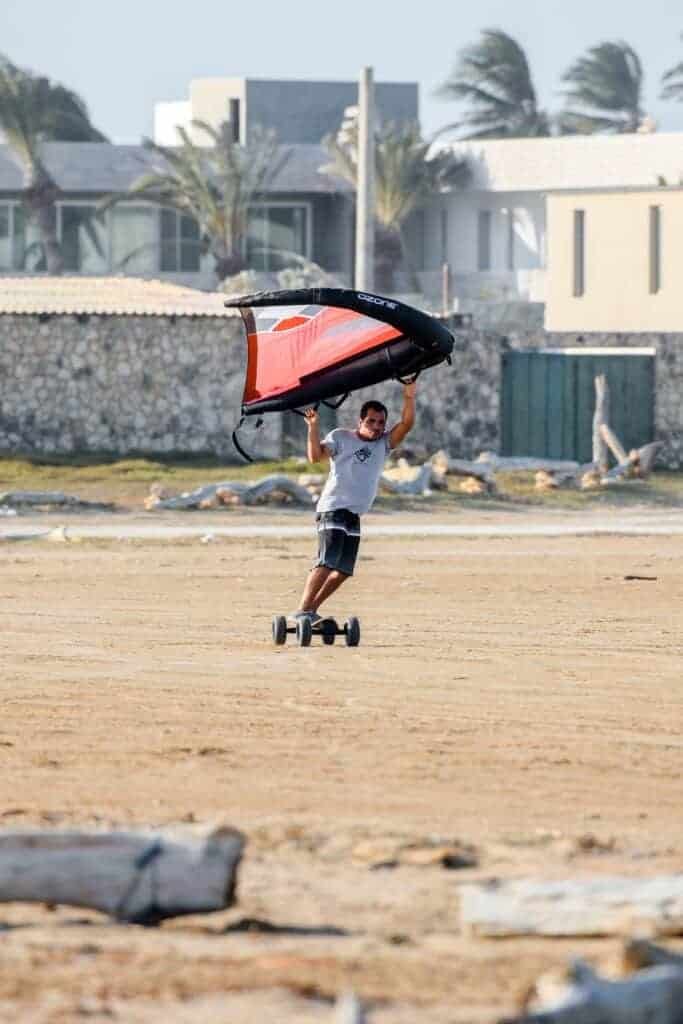

Now that you’re prepared, it’s time to start practicing! Begin with land-based practice to familiarize yourself with the wing and its handling. Then, progress to practicing in the water, starting with kneeling on the board and gradually working up to standing and foiling.
Consistent practice will help you build your skills and confidence.
Land-Based Practice
Starting with land-based practice allows you to get comfortable with the wing and its handling before entering the water. Focus on hand changes, tacking, jibing, and holding the wing in different positions.
Practicing on land will help you develop the skills and muscle memory needed for a smoother transition to the water.
Progressing in the Water
Once you feel confident on land, progress to practicing in the water. Start by kneeling on the board to become comfortable and confident before attempting to stand and foil. As your skills improve, try standing on the board and gradually work your way up to more advanced maneuvers and challenging conditions.
Remember, practice makes perfect, so be patient with yourself and enjoy the journey!
Overcoming Common Challenges for Beginner Wing Foilers
As with any new sport, beginner wing foilers may face some challenges. By understanding these challenges and learning how to overcome them, you’ll be better prepared to progress in your wing foiling journey.
With the right knowledge and practice, you can quickly become a proficient wing foiler. Knowing the basics of the sport, such as the equipment, the techniques, and the basics of the sport.
Maintaining Balance
One of the most common challenges beginner wing foilers face is maintaining balance on the board. To improve your balance, focus on adjusting your stance and body positioning, keeping your feet parallel and your weight evenly distributed.
Additionally, practicing core-strengthening exercises like planks, squats, and lunges can help you maintain balance and control on the board.
Controlling Speed and Power
Controlling speed and power while using a wing board for wing foiling is essential for maintaining stability and balance, as well as generating enough power to drive through the board. To control speed and power, practice adjusting the angle of the wing relative to the board and using the power zone to generate power.
Additionally, use the wind direction and water conditions to your advantage to fine-tune your speed and power control.
Tips and Tricks for Accelerated Learning
To accelerate your learning, there are several tips and tricks you can follow. By learning from others and practicing consistently, you’ll be well on your way to mastering this exciting sport.
Start by watching videos and tutorials from experienced wing foilers. This will give you an idea of the basics and help you understand the fundamentals of the sport. Additionally, you can join a group.
Learning from Others
One of the best ways to learn is by learning from others. Take lessons, join a wing foiling community, or watch instructional videos to benefit from the experience and knowledge of others.
By seeking guidance and feedback, you’ll be able to progress more quickly and avoid common mistakes that beginners often make.
Consistent Practice
Commit to consistent practice to build your skills and confidence. Start with light winds and flat water, gradually increasing the wind strength and water conditions as your skills improve. To begin your journey, it’s essential to start wing foiling in a safe and controlled environment.
Focus on mastering the basics before attempting more advanced maneuvers and challenging conditions. Remember, practice makes perfect, so embrace the learning process and enjoy the ride!
Summary
Wing foiling is an exciting and rapidly growing water sport that combines elements of windsurfing, kitesurfing, and foiling. By mastering the basics, selecting the right equipment, and practicing consistently, you’ll be well on your way to conquering the waves and flying over the water.
The world of wing foiling offers an unmatched blend of thrill, adventure, and the pure joy of harnessing nature’s power to glide above the water. Its unique combination of surfing, windsurfing, and kiting elements, distilled into a singular, exhilarating water sport, allows it to stand out in the vast ocean of aquatic activities.
For those who love the great outdoors, have a sense of adventure, or simply want to try something new, wing foiling provides a captivating new horizon to explore. And the best part? There’s a vibrant, supportive community of fellow wing foilers ready to welcome you with open arms.
Frequently Asked Questions
Is wing foiling difficult?
Wing foiling is no simple task, and requires consistent practice, skill development, and a good sense of balance. Depending on your level of kitesurfing or surfing experience, it can be challenging to learn how to effectively use the foil with the wing.
However, with patience and dedication, you can soon become an expert at this exciting sport!
Is wing foiling easier than windsurfing?
Wing foiling is definitely easier to learn than windsurfing for people of all ages! It can be mastered in a few days, while windsurfing requires more practice.
With the right equipment and proper guidance, learning how to wing foil is an incredibly fun and rewarding experience.
Is wing foiling easier than kiteboarding?
Wing foiling can be more accessible to beginners, as the learning curve is less steep and it’s less physically demanding. Kites can generate greater power surges, allowing kite foilers to ride faster, jump higher, and use smaller boards and foils; however, it can be more hazardous and limited in where it can be used, making it more difficult to learn.
All in all, wing foiling may be easier than kiteboarding for the average user.
What do I need to start wing foiling?
Are you ready to get started with wing foiling? You’ll need a wing board, foil (mast, fuselage, front and wing tips, and stabilizer), inflatable wing, pump, helmet, and wetsuit or board shorts!
With the right gear, you’ll be out on the water in no time.
What is the ideal wind strength and direction for beginners in wing foiling?
The perfect wind strength and direction for beginner wing foilers is 15-20 knots, coming in from cross-shore directions. This one wind weapon will provide the right mix of power and safety to get you comfortable with the activity and get you foiling!
Is a wing a foil?
A wing is not a foil. A foil is composed of a mast, fuselage, front wing and stabilizer that helps you lift off the water’s surface. The back wing is an inflatable sail-like structure that is used to propel you on the board with the help of the wind. Together they make up a complete foiling kit.
What’s the difference between foil and hydrofoil?
Foil means wings (like wings from airplanes). Hydrofoil are wings that fly in water. In addition to being an umbrella, hydroflotilla is used as a reference vessel.

